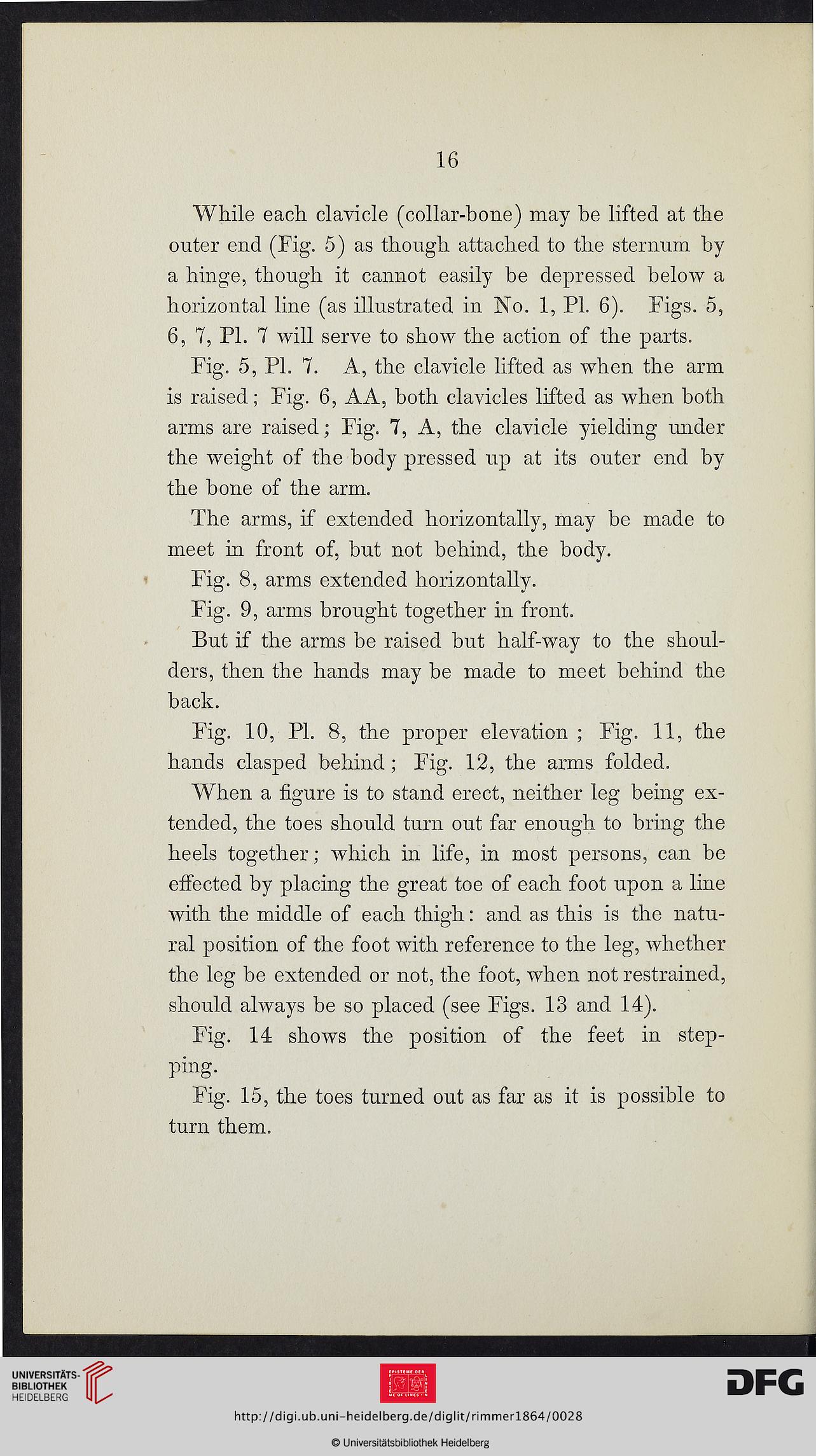16
While each clavicle (collar-bone) may be lifted at the
outer end (Fig. 5) as though attached to the sternum by
a hinge, though it cannot easily be depressed below a
horizontal line (as illustrated in No. 1, PI. 6). Figs. 5,
6, 7, PI. 7 will serve to show the action of the parts.
Fig. 5, PI. 7. A, the clavicle lifted as when the arm
is raised; Fig. 6, AA, both clavicles lifted as when both
arms are raised; Fig. 7, A, the clavicle yielding under
the weight of the body pressed up at its outer end by
the bone of the arm.
The arms, if extended horizontally, may be made to
meet in front of, but not behind, the body.
Fig. 8, arms extended horizontally.
Fig. 9, arms brought together in front.
But if the arms be raised but half-way to the shoul-
ders, then the hands may be made to meet behind the
back.
Fig. 10, PI. 8, the proper elevation ; Fig. 11, the
hands clasped behind ; Fig. 12, the arms folded.
When a figure is to stand erect, neither leg being ex-
tended, the toes should turn out far enough to bring the
heels together; which in life, in most persons, can be
effected by placing the great toe of each foot upon a line
with the middle of each thigh: and as this is the natu-
ral position of the foot with reference to the leg, whether
the leg be extended or not, the foot, when not restrained,
should always be so placed (see Figs. 13 and 14).
Fig. 14 shows the position of the feet in step-
ping.
Fig. 15, the toes turned out as far as it is possible to
turn them.
While each clavicle (collar-bone) may be lifted at the
outer end (Fig. 5) as though attached to the sternum by
a hinge, though it cannot easily be depressed below a
horizontal line (as illustrated in No. 1, PI. 6). Figs. 5,
6, 7, PI. 7 will serve to show the action of the parts.
Fig. 5, PI. 7. A, the clavicle lifted as when the arm
is raised; Fig. 6, AA, both clavicles lifted as when both
arms are raised; Fig. 7, A, the clavicle yielding under
the weight of the body pressed up at its outer end by
the bone of the arm.
The arms, if extended horizontally, may be made to
meet in front of, but not behind, the body.
Fig. 8, arms extended horizontally.
Fig. 9, arms brought together in front.
But if the arms be raised but half-way to the shoul-
ders, then the hands may be made to meet behind the
back.
Fig. 10, PI. 8, the proper elevation ; Fig. 11, the
hands clasped behind ; Fig. 12, the arms folded.
When a figure is to stand erect, neither leg being ex-
tended, the toes should turn out far enough to bring the
heels together; which in life, in most persons, can be
effected by placing the great toe of each foot upon a line
with the middle of each thigh: and as this is the natu-
ral position of the foot with reference to the leg, whether
the leg be extended or not, the foot, when not restrained,
should always be so placed (see Figs. 13 and 14).
Fig. 14 shows the position of the feet in step-
ping.
Fig. 15, the toes turned out as far as it is possible to
turn them.




